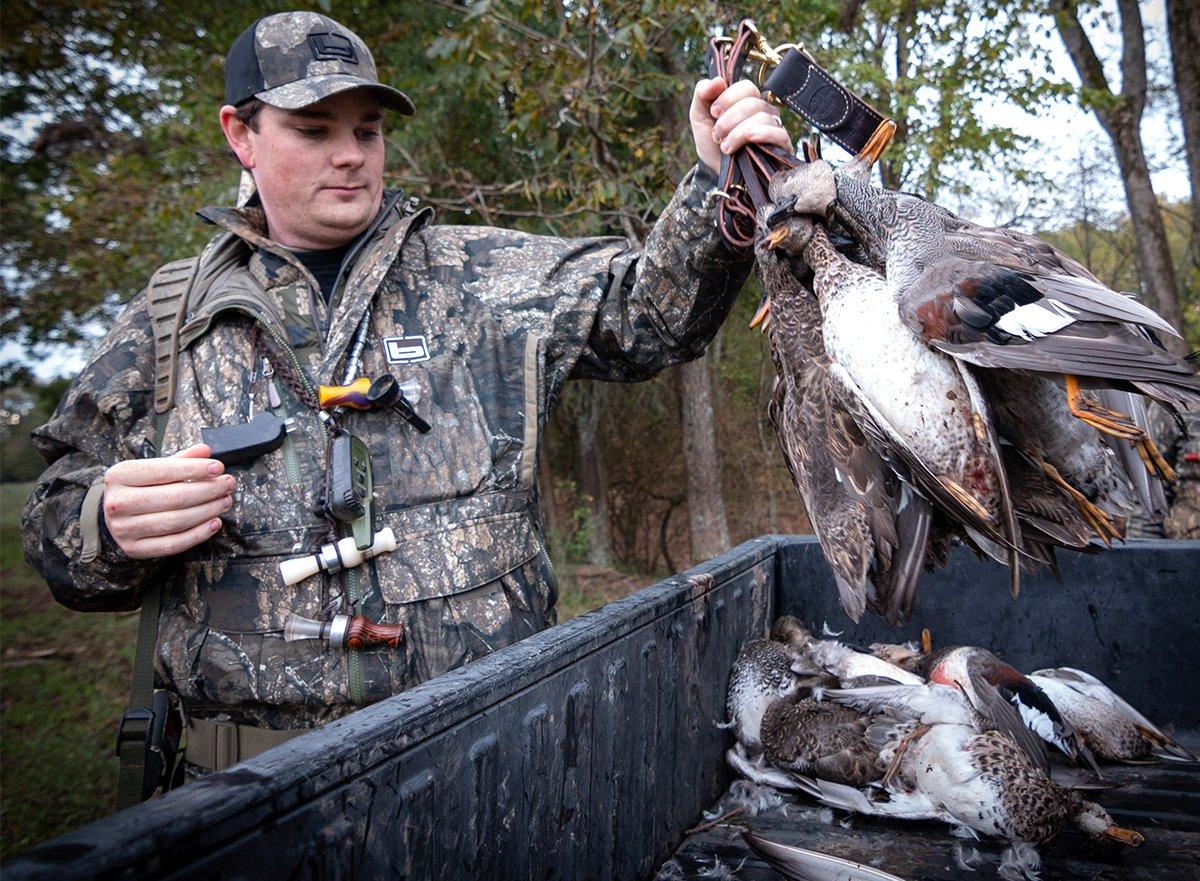Does goose sausage count toward your legal possession limit? Yes. We asked a federal game warden to clarify
Of all the waterfowling misconceptions perpetuated by social media and barstool banter, confusion about possession limits might be the most perplexing.
Online questions about how many ducks or geese you can keep in your fridge or freezer often prompt wildly varying responses, such as: Three times the daily limit plus all the sausage you want, or, As many as you dang well like.
Neither is correct, of course. To cut through the obfuscation, we asked a federal law-enforcement official to clarify.
Possession limits should be thought of as the number of birds a person can own, said Patrick Lund, resident U.S. Fish and Wildlife Service agent in charge for Iowa, Minnesota, and Wisconsin. It is distinguishable from custody, which is similar to control. Possession limits were created to keep people from hoarding migratory game birds and are still important for that purpose.
Possession limits are set by the flyways and approved by the Fish and Wildlife Service. They're published in the federal register each year. In recent years, most flyways increased the possession limit from two times the daily bag limit to three times the daily bag limit. (Some state limits might be more restrictive.) So, a hunter in the Mississippi Flyway could shoot his daily bag limit of six gadwalls three consecutive days and legally keep those 18 birds in his freezer as his possession limit. However, if he hunted on the fourth day and shot a duck, he'd exceed his legal possession limit by having 19 birds. And like bag limits, possession limits are broken down by species. The Mississippi Flyway has a four-mallard bag limit, so the mallard possession limit is 12. Likewise, it has a bag limit of three wood ducks, so that possession limit is nine. Of course, you could still have 18 ducks in aggregate (say 10 mallards and eight woodies) and remain legal.
Processed migratory game birds still count toward one's possession limit.
Some hunters mistakenly believe that processing birds into sausage, hot sticks or other items removes them from their possession limit, allowing the hunters to take more ducks or geese. Lund stressed that's not true.
Processing migratory game birds does not terminate possession, he said. Therefore, processed migratory game birds still count toward one's possession limit.
In other words, if you grind the breasts of 18 goldeneyes into jerky or sausage, that product still counts as 18 ducks. And if you then shoot more ducks, you've exceeded your limit.
A few folks also question how possession ends and when a duck or goose is considered to no longer be in possession. Lund said the regulation reads: The possession of birds taken by any hunter shall be deemed to have ceased when such birds have been delivered by him to another person as a gift; or have been delivered by him to a post office, a common carrier or a migratory bird preservation facility and consigned for transport by the Postal Service or a common carrier to some person other than the hunter.
You may notice that consuming birds is not specifically listed as a method of terminating possession, Lund said. However, we have considered it implied and that consuming a bird terminates possession.
So basically, you must consume or gift a bird for possession to cease.
Some hunters criticize possession limits as being outdated and suggest that they make it difficult to remain legal during long road trips. The latter might hold a hint of truth, but there's an easy solution: Eat your ducks or geese as soon as possible after shooting them. Or give some to local landowners to say thanks. That lets you enjoy or share one of nature's great culinary treats and keeps you legal to hunt the next day.
Click here for more Realtree waterfowl hunting content. And check us out on Facebook.







